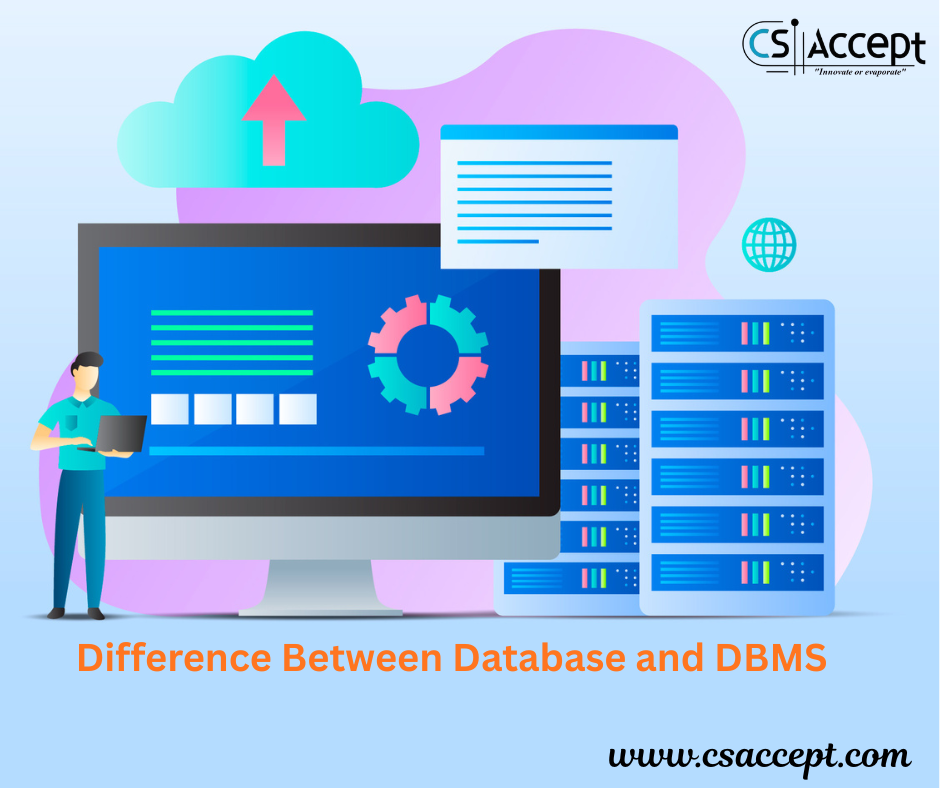
Types of Computer Language ( Introduction )
Computer language is a code or syntax that helps to write programs or specific applications. It is usually used to communicate with computers. It consists of a low-level and high-level language, further dividing based on functionality. For computer language processing, the system needs a compiler and interpreter to convert the language into computer language so that a machine can process it. In this article, you will learn different types of Computer Language.
These computer languages can be from machine language to current trends of Python, C++, Java, SQL, etc. The emergence of each language made the work of programmers easier due to the efficiency of the codes written.
Key Highlights
1. Computer language is a formal language that allows communication with computers. Every application, web page, or other software is an application of computer language.
2. Two primary categories of programming languages computer programmers utilize are low-level and high-level languages. We categorize these languages further based on their writing styles.
3. Programmers can write programs using particular objects, such as procedures, or without using them.
Different Types of Computer Language :
There are six types of computer languages –
1. Low-Level Language
The low-level programming language is close to a computer instruction set and works directly with the hardware components of a computer. It is similar to the machine code language 0’s and 1’s.
1.1: Machine Language :
Machine language is a code or object code consisting of binary digits 0 and 1. A computer system can easily understand and interpret these binary digits. We consider machine language a native tongue that the central processing unit (CPU) directly understands and interprets. However, comprehending machine language can be difficult because it expresses commands using a binary system of 1s and 0s, resulting in ambiguity. One thing to note is that computers only understand machine language, the only language they can process. The operating system of a computer system identifies the specific machine language used in that particular system.
The operating system defines how to write programs that can be converted into machine language and take appropriate actions. Programmers can also write computer programs and scripts in programming languages such as C, C++, and Java. However, a computer system cannot directly understand these languages, so there is a need for a program that can convert these computer programs to machine language. The compiler converts the programs to machine language, which computer systems can easily understand. The compiler generates the binary file and executable file.
Example of machine language for the text “Hello World”:-
01001000 0110101 01101100 01101100 01101111 00100000 01010111 01101111 01110010 01101100 01100100
Advantages of Machine Language
We consider machine language the fastest programming language since it doesn’t require translation, enabling programs to operate faster.
Disadvantages of Machine Language
The internal design of every computer is different from each other. So the programs written for one computer will be different from the other, and it would be difficult for the programmer when the company switches from one machine to another.
1.2 Assembly Language :
The assembly language is low-level for microprocessors and many other programmable devices. People also consider the assembly language a second-generation language. The first-generation language is machine language. The assembly language is famous primarily for writing operating systems and desktop applications. The operations carried out by programmers using assembly language are memory management, registry access, and clock cycle operations. An assembly language is a group of other languages that implement the symbolic representation of machine code for programming CPU architecture. The other name of assembly language is assembly code. For any processor, the most used programming language is assembly language.
In assembly language, the programmer does the operation, which can be directly executed on a central processing unit (CPU). The language has certain drawbacks as it does not contain any variables or functions in programs, and also, the program is not portable on different processors. The assembly language uses the same structure and commands machine language uses, but it uses names instead of numbers. The operations performed using the assembly language are very fast. Comparing it to high-level languages, we find that processes are much quicker.
Advantages of Assembly-Level Language
The language is easy to understand when compared to machine language. The compiler takes less time to translate the code, and the efficiency of the execution of the code is more.
Disadvantages of Assembly level language
The drawback of assembly language is that the code cannot be reused and is not easy to understand.
2. High-Level Language
Programmers developed high-level languages in response to the issues they faced while writing programs. The older language poses portability issues because transferring code written from one machine to another is difficult. This led to the development of high-level language. The high-level language is easy to understand, and the code can be written quickly as the programs written are user-friendly in a high-level language.
Another advantage of code written in a high-level language is that it is independent of a specific computer system, allowing for easy transferability to other machines. The high-level language uses the concept of abstraction and also focuses on programming language rather than focusing on computer hardware components like register utilization or memory utilization.
Programmers develop higher-level languages to write human-readable programs that are easily understandable by any user. Humans can easily understand the programming style when using high-level language syntax compared to low-level language. The only requirement in a high-level language is the need for a compiler. The computer system does not directly understand the program written in a high-level language. Before executing high-level programs, someone needs to convert them to machine-level language.
Types of High-Level Language :
2.1 Procedural languages
A procedural language is a third-generation language easily created with simple procedures. These procedures are instructions in a sequence with a unique name. Hence the execution of these instructions happens with the name assigned to it.
Here are some examples of popular Procedural Languages:
1. C Language: Developers widely use the C Language to develop system software like operating systems and device drivers. The language is well-known for its proficiency in efficiently managing hardware resources.
2. Fortran: People use Fortran as a programming language for scientific computing and numerical analysis. It has found extensive application in physics, engineering, and astronomy and is relevant today.
3. Pascal: Pascal is a Procedural Language designed to be easy to learn and use. This tool can create applications in various fields, such as education, engineering, and business.
4. BASIC: In designing BASIC (Beginner’s All-purpose Symbolic Instruction Code), the goal was to create a procedural language that is easy for beginners to learn and use. People commonly use this software to develop basic applications and educational programs.
5. COBOL: COBOL (Common Business Oriented Language) is a procedural language initially developed for business applications. It is still used today for developing banking, insurance, and government applications.
2.2 Functional Languages
Functional languages rely on mathematical functions as their core concept, as they are a type of high-level language. Functional languages give functions equal status by assigning them to variables, using them as arguments in other functions, and returning them as values from functions.
Developers create Functional Languages to make them brief, clear, and easily understandable. They often use them to develop applications requiring extensive data manipulation, such as artificial intelligence and data analysis. Functional Languages are also used in web development and game development.
Here are some examples of popular Functional Languages:
1. Haskell: Haskell is a purely Functional Language known for its safety features and ability to handle complex mathematical operations. Industries use this tool for creating applications in various fields, including artificial intelligence, data analysis, and finance.
2. Lisp: Lisp is one of the oldest Functional Languages still used today. It is known for its flexibility and ability to handle complex data structures. Lisp is used for developing applications in various fields, including artificial intelligence, robotics, and game development.
3. Erlang: Erlang is a Functional Language designed to develop concurrent and distributed systems. The telecommunications industry extensively utilizes it for creating messaging systems and other real-time applications.
4. F#: F# is a Functional Language based on the .NET framework. It is used for developing applications in various fields, including web development, game development, and artificial intelligence.
5. Clojure: Clojure, a functional programming language with roots in Lisp, offers incredible expressiveness and finds application in diverse fields such as web development, data analysis, and machine learning.
2.3 Object-oriented programming languages
Object-oriented programming language has recently been the dominant method for developing new software. The development of the application happens through a collection of objects. These objects consist of modules and data structures. Here are some examples of popular Object-Oriented Languages:
1. Java: Java is a widely-used Object-Oriented Language for developing various applications, such as web applications, mobile applications, and games. The main motto of developing this language is to make a computer program run on any system. JAVA code exhibits machine independence, which implies that developers need to write the code once and can execute it on any machine. Memory management is done automatically in the Java programming language. It is known for its security features and ability to run on multiple platforms.
2. Python: Python is a widely used Object-Oriented Language popular for data analysis, machine learning, and artificial intelligence. This platform is well-known for its interface, which is easy to use, and its ability to process large amounts of data quickly and effectively.
3. C++: C++ is an Object-Oriented Language for developing applications requiring high-performance and low-level control, such as operating systems and game engines. This is renowned for being fast and efficient.
4. Ruby: We use Ruby as an object-oriented language for web development and scripting, and it is famous for being simple to use and having a straightforward design.
5. Swift: Swift is an Object-Oriented Language used to develop applications for Apple devices, such as iPhones and iPads. It is known for its safety features and ability to handle complex applications.
Advantages of High-level language :
Programmers can quickly write the codes in High-level language due to the built-in libraries. It is easy to detect and correct the errors obtained.
Disadvantages of High-level language :
They are less flexible than low-level languages because they don’t have mechanisms or instructions to control the CPU or memory.
3. Scripting Languages :
We design scripting languages as high-level languages to be easy to use and learn, and we use them for automating repetitive tasks and creating dynamic web pages. Developers prefer interpreted scripting languages because they don’t require compilation before running, enabling them to prototype and quickly test their code rapidly.
1. JavaScript: JavaScript is a popular Scripting Language for creating dynamic and interactive web pages. We often use it with HTML and CSS to build complex web applications. Node.js is a platform that uses JavaScript for developing server-side applications. We know it for its versatility, and this function performs effectively on various devices.
2. Python: We widely use Python as a popular scripting language for various applications, including web development, data analysis, and artificial intelligence. It is famous for its user-friendly nature and ability to handle large amounts of data. Python, often used in scientific computing and Machine learning, also extensively utilizes it.
3. Ruby: We often use Ruby as a scripting language for web development and scripting. The web development framework Ruby on Rails widely recognizes and appreciated for its user-friendliness and straightforwardness. This excellent tool is perfect for creating web applications and APIs.
4. Perl: We often use Perl as a scripting language for text processing, web development, and system administration, and it is famous for its powerful regular expressions. It can manage intricate data structures.
5. Node.js: Node.js is a platform for developing server-side applications using JavaScript. It allows developers to use JavaScript for client- and server-side development, making it a versatile platform. Developers often use Node.js to develop real-time applications like chat and online games.
6. Bash: Bash is a Scripting Language used primarily for shell scripting in Linux and Unix-based operating systems. It is also the default command-line shell for these systems. Bash is famous for its powerful command-line interface that enables users to perform various tasks using simple commands.
4. Markup Languages :
Markup Languages are computer languages used to format text for display on the web or in documents. Tags and other markers are used in markup languages to describe how text should be formatted or displayed. The goal of markup languages is to make them machine and human-readable.
1. HTML: HTML (Hypertext Markup Language) is the go-to Markup Language when designing web pages. This language utilizes tags to establish the organization and information on a webpage, such as headings, paragraphs, links, images, and other essential elements. HTML is a widely-used and universally supported language among all web browsers.
2. XML: XML (Extensible Markup Language) stores and exchanges data between different systems. Tags define data structure and content, representing complex data structures. Enterprise applications, data sharing, and web services commonly use XML format.
3. Markdown: Markdown is an uncomplicated markup language that enables users to format text seamlessly for the web. The creators designed the syntax to facilitate the conversion of plain text into HTML., which makes it a favored option among web developers and content creators. Markdown’s functionality empowers users to produce visually appealing and well-organized content with minimal effort, making content creation more efficient and less time-consuming. With Markdown’s user-friendly features, users can create web content that is both aesthetically pleasing and easy to navigate, enhancing the user experience and driving traffic to their websites. It uses plain text and simple tags to define headings, lists, links, and other elements. Markdown is easy to learn and use and commonly used for writing documentation, blog posts, and other web content.
5. Query Languages :
We use query languages as computer languages to retrieve and manipulate database data. Using commands or statements in query languages allows users to edit or get data from a database that meets specific criteria. Various applications use languages for multiple purposes., including business intelligence, data analytics, and web development.
1. SQL: Structured Query Language (SQL) widely used for managing relational databases. Specifically used to create, modify, and delete databases, tables, and other database objects and to query data stored in these databases. We widely use SQL in enterprise applications, web development, and data analytics.
2. SPARQL: SPARQL Protocol and RDF Query Language is a language people use for querying data that they store in RDF format. We use RDF as a versatile data model for metadata representation, and people use SPARQL to manipulate and retrieve data in RDF format. SPARQL is beneficial in applications that deal with large amounts of data, such as data analytics and scientific research.
6. Domain-Specific Languages :
Developers design Domain-Specific Languages (DSLs) for specific domains or problems to simplify programming tasks by providing a language tailored to the needs of a particular application. Multiple applications utilize domain-specific languages (DSLs), including scientific computing, financial modeling, and game development.
1. MATLAB: We use MATLAB as a domain-specific language for scientific computing and data analysis. It provides a robust environment for numerical computation, visualization, and programming. Scientists in various fields, including engineering and physics, commonly use MATLAB.
2. R Language: We primarily use R Language as a domain-specific language for statistical computing and graphics. A widespread tool for data analysis and scientific research, it offers diverse statistical and graphical techniques. R Language is open-source and has a large and active community of users and developers.
Differences between the low-level and high-level language :
| Parameters | Low-level language | High-level language |
| Definition | The programming language has no or little abstraction from the computer’s instruction set. | The programming language has robust abstraction from the computer instruction set. |
| Abstraction level | Low-level languages operate at a low level of abstraction, while high-level languages operate at a higher level of abstraction. Low-level languages provide direct hardware access, and programmers must work with machine-level instructions. | Designers create high-level languages to be more abstract, and programmers can use more straightforward, more intuitive instructions to perform tasks. |
| Readability | Low-level languages are difficult to read and write because they use machine-level instructions that could be more intuitive. | Developers purposely create high-level programming languages to be easily readable and writable by humans through human-readable instructions. |
| Portability | Low-level languages are specific to a particular computer architecture and are not portable. We must rewrite programs written in low-level languages to work on a different architecture. | However, designers create high-level languages to be portable and run on any computer with the appropriate software. |
| Maintenance | Low-level languages are difficult to debug and maintain because they are closer to the hardware and require a deep understanding of the architecture. | High-level languages are easier to debug and maintain because they are more abstract and easier to read. |
| Speed | Low-level languages are faster than high-level languages because they provide direct access to the hardware. | High-level languages are slower because they require translation into machine-level code. |
| Examples | Low-level languages include machine language and assembly language | high-level languages include Python, Java, C++, Ruby, and JavaScript. |
Final Thoughts
As there is continuous development in the programming language from machine language to low-level language to high-level language, the programmers get the maximum benefit as they don’t have to write a complex program. Humans can quickly write and understand programs in this language. The only need is to convert it into machine language. When selecting a programming language, it is crucial to consider the unique requirements and objectives of the project since every language has pros and cons.
Frequently Asked Questions
Q1 What is a programming language?
Answer: We refer to the notion of writing a computer program as a programming language. It has a set of grammatical rules that commands the computer to perform certain operations.
Q2 Is HTML a programming language?
Answer: HTML or Hypertext Markup language provides declarative instructions to the computer to obtain the necessary results. Technically, it is not a programming language but a markup language that helps design web pages.
Q3 Give an example of low-level language in C.
Answer: Low-level language is also famous as machine language. Binary language is the best example of a low-level language that provides 0’s and 1’s as output.
Q4 Mention the examples of high-level languages.
Answer: Recently, the emergence of programming languages has been tremendous, starting from C, C++, Java, Python, Ruby, Perl, PHP, etc.
Conclusion- Types of Computer Language
As there is continuous development in the programming language from machine language to low-level language to high-level language, the programmers get the maximum benefit as they don’t have to write a complex program. Humans can quickly write and understand programs in this language. The only need is to convert it into machine language.







